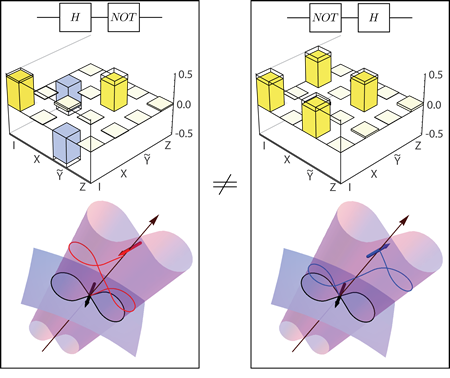Imagine, you plan for a Sundays hike along a splendid trail laid out in a figure-eight and you have to decide which of the two lobes you walk about first. Usually, it makes no difference and any choice leaves you afterwards in the same weary but contented state of mind. We have now demonstrated that in a quantum world you have to be more careful in your choice. Because of the non-abelian geometric effect the final state of a superconducting quantum device depends on which loop is traversed first.
The concept of non-abelian geometric transformations was introduced in 1984 by Wilczek and Zee. Despite intense theoretical study for almost 30 years, a clear experimental observation has been hindered by the prevailing constraints on slow, adiabatic evolution. We overcome these challenges, and the accompanying effects of decoherence, by realizing fast, non-adiabatic non-abelian geometric phases in a driven three-level superconducting artificial atom. The variation of a single drive parameter leads to a deformation of the system’s evolution path and results in non-commuting quantum operations which are analyzed by full process tomography. Applying two gates in series, we explicitly show — to our knowledge for the first time — their non-commuting character. Intriguingly, because such geometric operations depend only on the encircled area, but not on the evolution time, they may prove to be useful in realizing noise-resilient quantum algorithms based on solely geometric quantum operations.
 |
| Figure 1: Process matrices of two geometric transformation executed in different order. |
Full article:
http://www.nature.com/nature/journal/vaop/ncurrent/full/nature12010.html, also in arXiv:1304.5186
ETH-Life article:
http://www.ethlife.ethz.ch/archive_articles/130418_quantensysteme_at/ind...
A. A. Abdumalikov, J. M. Fink, K. Juliusson, M. Pechal, S. Berger, A. Wallraff, and S. Filipp, Nature 496, 482 (2013)


